Dewey 21C: December 2010 Archives
Douglas noted that she has had to make a lot of tough decisions to maintain the program, including excessing a math teacher last year instead of an art teacher.

Essentially, I was sharing with the readers of Dewey21C, an article that had been published in the New York Teacher.
Today, I received a sad follow-up, directly from Linda Starkweather:
Richard,You were kind enough to share my POV article, The Challenge of Teaching Art in the Public School System, with your readers last year. I am now an Ex-teacher, in part I suspect, due to that article. I have just submitted a follow up piece. I don't know if they will publish it, but I thought you might be interested in the rest of that story, so here it is . . .
"We have to do more with the arts."
"Exposure to the Arts Means Higher SAT Scores."The Arizona Arts Commission has launched a new public awareness campaign: The Choice is Art.
Click here to go straight to their website.
Welcome back Jane Remer, to Dewey21C. Jane brings to us an end of the year reflection, provoked by one of my recent posts. Jane gives us something to think about as we head towards the new year. --RK
***********************************************************************************************************
Jane Remer's CliffNotes:
Why the Arts as Education: Urgent Reflections at the End of Another Challenging Year
December 13, 2010
Made in America: Our Cultural Heritage/December 13, 2010 Post, Richard Kessler:
... So, why the arts? For this moment, in memory of John Lennon, I will say that it is because it helps to expand the hearts and minds of our citizens, providing a context and meaning for their lives and world, helping to create a pathway for them to be happy, productive, and ready to participate in a democracy.
I once did a survey of the various rationales for the arts in/as/for education. I was curious to learn how many would come up with different reasons to support them in schooling, K-12. As I recall, I assembled almost fifty of them from around the country in various books, articles, research papers, advocacy statements and the like.
Thematically, the reasons broke down into categories:
Arts for
- Aesthetic awareness and understanding
- Cultural heritage
- Citizenship
- Democracy
- International relationships and understanding
- The creation and development of mind
- The creation and development of body
- Socialization
- Respectful behavior and collaboration
- Creation
- Imagination
- Invention
- Language and Communication
- Physical and mental health and therapy
- Balm to the "souls" of prisoners and others trapped or confined
- Means by which to achieve other artistic or non-artistic ends
- Useful to improve scores on literacy and other tests
- Entertainment, enrichment, diversion
- School development and instructional depth and change
- Add your own ....
Very few of the "claims" or purposes above have been reliably tested. We have volumes of words and information gathered from observation, correlation and clinical interviews, but so far, we have been unable to hit the research jackpot of cause/arts and effect/fill in the blanks. I believe that someday, a design that mixes and triangulates hard and soft data rigorously collected, analyzed and interpreted will begin to provide solid evidence of the value of the arts as education in a variety of situations, including school classrooms. We are not there yet.
Stuck as we are in yet another recession, struggling financially and obsessed with accountability while others lay the blame of our circumstances and our schooling on teachers, unions and principals, we remain a guileful nation. We attend to the current version of the powerful corporate rich and robber barons as they (who know nothing of public education or the challenges of schooling) pontificate on what ails us and how to fix it. In this environment, the arts just don't stand a chance, in the community, or in the schools, against the barrage of criticism and lunatic alternatives, and on January 1, it's going to be worse with a house and senate divided.
I strongly believe that as a rag-tag "field" we must take a serious look at that long list of claims and ask ourselves what few areas really deserve our attention now. At the very least, for the arts and education, we need to strip the number down to three or four major "claims," turn those claims into action and regular research questions, and collect hard and soft data that will persuade our colleagues and the general public that learner and other outcomes in the presence of the arts are possible, probable, and pretty important.
Within the framework of teaching and learning, regardless of the particular approach or programs, we need answers to why and how the arts as education. At least in NY City we should be able to gather our forces and make headway and perhaps serve as a beacon for the rest of the country.
Who will stand and deliver on this important mission?
Jane Remer
***************************************************************************************************
************************************************************************************************************


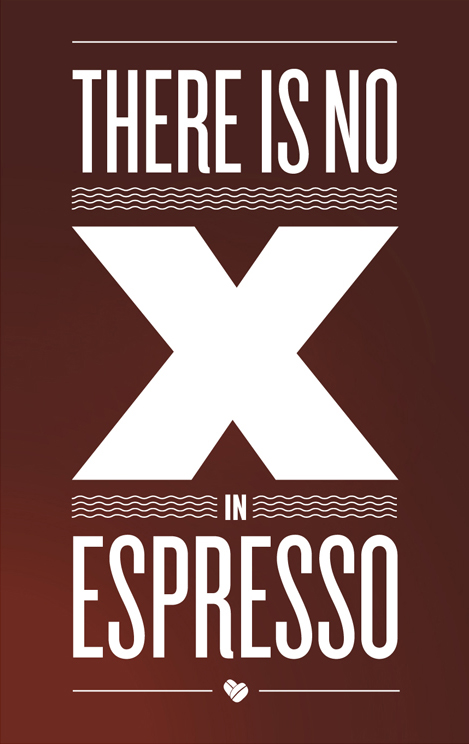 Perhaps
you're thinking that espresso isn't exactly one of the arts education
disciplines traditionally found in state standards.
Perhaps
you're thinking that espresso isn't exactly one of the arts education
disciplines traditionally found in state standards.Yes, that may be so. Nevertheless, if you don't know espresso as an art form, perhaps it's time to join the third wave. The Third Wave of Coffee that is.
I think the best place to start with espresso art is with a look. Here's one for you:
Here's another, a bit more traditional:
And what the hell, one more:
This is what is known as latte art. And yes, I can do some of it, but not all of it, because I use skim milk which doesn't expand when frothed the way whole milk does (it's all in the fat content).
The art is not limited to latte making. It's in how the espresso is ground, placed in the portafilter (the small metal filter in the espresso handle that holds the ground espresso), how the espresso is pressed (tamped) down in the filter with the tamper, and exactly how long you allow the water to pass through the compressed espresso (what is referred to as a pull).
All of these things interact as part of one espresso ecology, including the type of bean or beans used in the roast, the duration of the roast, the kind of roaster used, how old the beans are, how hot the water is, how much pressure the water is under, and even the temperature/humidity in the room.
Some of you may wonder why anyone would ever undertake such an endeavor. And of course, this doesn't include what goes into the frothing, if you choose to make a latte/cappuccino, etc. That's a whole 'nother interactive bit of art, including type of milk, angle of the frother, depth of the frother...you catch my milky drift?
Go to one of the great Third Wave espresso joints and order an espresso. Many of these places pull what is called a Triple Ristretto, which is a very short pull (less water), with a third more beans packed into the portafilter, which in the hands of a master barista will produce a shot that is mostly crema (that cream on the top of the espresso) and relatively little liquid. It will have a wildly different taste then you have ever tasted before. Forget that little bit of lemon peel you've had on the side.
Here's a pic:
How about that!!!! See all the colors, the reds and browns--
believe me, this is all crema, all the time. If you order an espresso and it's beige, and there's only a little bit of crema at the top, which is how it served at about 99% of the places across the country even today, well, it's going to be sour, thin, and well, a waste of calories, not to mention a waste of time and money. I guess the caffeine delivery will remain intact, which is vital, I give you that.
For many years, espresso in America was limited to a few Italian restaurants, just the small minority that had some connection to Italy, I guess, and wanted to offer a homeland drink on the menu. That being said, the stuff was horrendous, as is much of the espresso I encounter today, even with the Third Wave. Go to Starbucks and order an espresso, if you want to see what I mean. Yikes. The little lemon peel they used to serve with the espresso was to counteract the terrible bitterness of the vile liquid.
In 1992 I went to Italy for the first time, and got hooked on espresso. (I also declared myself at the time, an "Honorary Italian.") I didn't get hooked at the fancy cafes, but rather at the highway-side restaurants off the autostrada called Autogrill. You could get great pannini, sit down for a very good bowl of pasta, and sidle up to the bar for these fantastic espressi that the baristi were cranking out one after the other. The Italians would add sugar, and just down the espresso in practically one gulp, leave a small tip on the counter, and then bolt for their la macchina to continue along on merry caffeinated way...
I was hooked.
And in case you missed it: we have McDonald's; they have Autogrill. Who wouldn't declare themselves an honorary Italian?
The day after returning to New York, I bought my first espresso machine: A DeLonghi. Then I went to a Baby Gaggia. Then I went to Liva 90. Today, I own a Vetrano by Quickmill.
This:
begat this:
which begat this:
Now this:
The Vetrano is plumbed in directly to my cold water line, so I never have to manually add water. (The espresso machines where you have to add water by hand, is called a "pour over" machine.) The water line is double filtered, for sediment and for minerals. I did it all myself, including tapping into the cold water line, installing the filters, and drilling through the floorboards and counter top.
And of course, you've got to have a great grinder:
The approach to espresso is regionally based. In Italy, if you go North, the espresso is smooth; the beans are chocolate in color, not black. Very far north, in say a place like Trento, they will give you espresso, and a small beaker of cold milk, as well as a small beaker of warm milk, for you to create your own macchiato. It's very elegant and civilized.
Try the espresso down south in Naples. There's a splendid place right across from the Teatro San Carlo (the opera house): Gran Caffe Gambrinus. They've got these wild espresso machines with super long handles that control the pull. Overall, it looks very much like the wonderful cafes in Vienna, where Lenin and Freud hung out (Cafe Central).
The place in Naples serves a very short pull that is almost burned and sort of spicy. It's a southern Italian approach. A northerner would probably spit it out.
There are two places in Rome that I absolutely love, and they are both right near the Pantheon. Cafe Tazzo d'Oro and Cafe Sant'Eustachio.
Tazza D'Oro has a Jamaica Blue Mountain roast espresso, that is a one of a kind. They have these ancient roasters right there in the cafe. D'Oro keeps their cups warmed to the perfect temperature prior to the pull by keeping them in a water bath.
Go Northwest in the US, and the beans are black. That's the kind of espresso you get in the Fotomats converted to drive-through espresso joints. Ever see one of them? (Oddly enough, in this over-caffeinated region of the US, they have bikini-clad espresso servers) The Northwest style espresso is, I am sorry to say, not my cup of coffee.
In the last few years things have really taken off in New York City and beyond: there are amazing roasters and espresso places all over the country. Take a look at Intelligentsia, which is where I get my beans delivered from right to my home, every two weeks come rain or shine; Stumptown; Counter Culture Coffee; Novo, Metropolis (my current fav), and many others.
If you want to roast your own, here's a great website for that: Sweet Maria's.
So, where do I go in NYC when I want a great triple ristretto? Cafe Grumpy; Stumptown, and Ninth Street Espresso. Fortunately, my work takes me to the Tweed Courthouse and the offices of the City Council and State Legislature in downtown Manhattan. There is a great joint on Chambers Street, that only serves a double ristretto: Blue Spoon, but they use Intelligentsia's Black Cat Espresso. Intelligentsia, based in Chicago, doesn't do the triple pull either. Nevertheless, one of their baristi was the reining champ of the World Barista Competition.
Why is coffee called "Joe"?
Josephus Daniels (1862-1948) was appointed Secretary of the U.S. Navy by President Woodrow Wilson in 1913. Among his numerous reforms of the Navy was the abolition of the officers wine mess. From that time on, the strongest drink aboard navy ships was coffee and over the years, a cup of coffee became known as "a cup of Joe."
My pal Harold Meltzer swears by Abraço in the East Village, but what does he know? Actually, Harold is right, the place, about the size of a walk-in closet, might just be the best in the city.
For those who like Kaffee mit Schlag and a nice Viennese pastry, New York City now has
an official outpost of one of the great Viennese Cafes: Demel. It's a very different kind of coffee, but just splendid, particularly with the fresh creme (schlag), the kind your cardiologist lectures against. If you make it there, try the topfen strudel, which is a sweet cheese strudel. I once spent a week in Vienna, for an international music conference, and everyday at 4pm, I would go to one of the great cafes, have my Kaffee, and one of those topfen strudel. Ah, those were the days! Okay, it's another thing your cardiologist won't like, true. And if you don't have a cardiologist, keep going to Demel, for it's a sure route for getting one, schnell.
Go into any of these Third Wave places, and you will see something new: the barista will pull the shot, smell it, taste it, and then very likely toss it in the trash. Then she or he will make the adjustment for all the things I mentioned earlier, and try again. Sometimes it will be the third or fourth pull that you will be served. It could be sour, thin, bitter; they're looking for just the right taste and smell, and they make adjustments even as the pull is happening, based on the color and density of the espresso coming out of the machine. When it's right, they serve it. Otherwise into the knock box and down the drain it goes.
As for the taste, well, it strikes me as very odd that the first time I posted this piece, I failed to mention anything about the taste. It's sort of like forgetting the outcome in a curriculum.
There are those who profess the taste to be the closest thing to the pure coffee taste. It is striking, when you taste a great espresso, with its thick multicolored crema, that may or may not have a tiger stripe of blond through the reddish-black, or may or may not have little speckles of gold, that it tastes very different. I remember going to Joe the Art of Coffee with Daniel Windham, and they pulled a couple of great shots for us. Daniel too one sip, smiled, and said "wow," that is different. (I am sorry to say I think that espresso joint has declined.)
Ultimately, it is a very complex flavor palate, that just as wine, is different depending on all the variables I mentioned earlier on. If you look at some of the roasting sites, you will see taste terminology that looks like it was swiped right from a sommelier.
So, there you have it. An Espresso Arts Education. While some of you may be thinking "get a life," in my own defense, I do want to point out that the thoughtfulness, the care, the science, the art, the history, and all of the other little things that go into this little world of espresso are indeed an art form, perhaps more of the art of living or the everyday art of life.
When people say that arts education is elite, I point to the art of espresso, or the art of gardening, or the art of entertaining, or the art of writing a personal letter or note, or the art of how your greet someone--the ways in which the an artful existence is all around us and within us, which makes us better, and certainly, well, more artful.
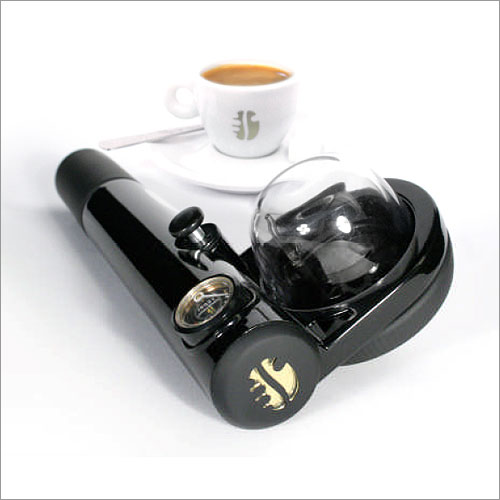
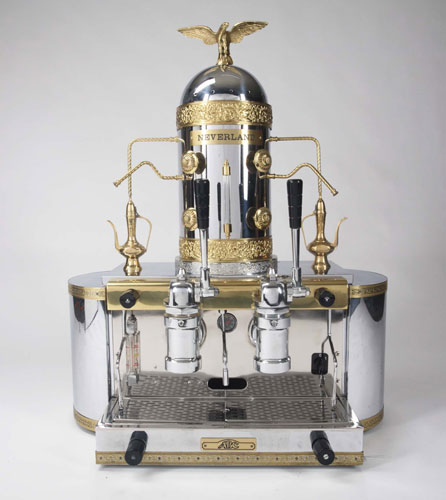

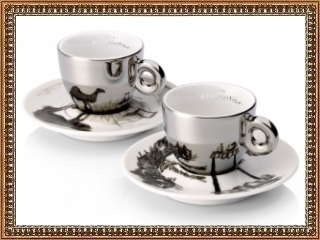
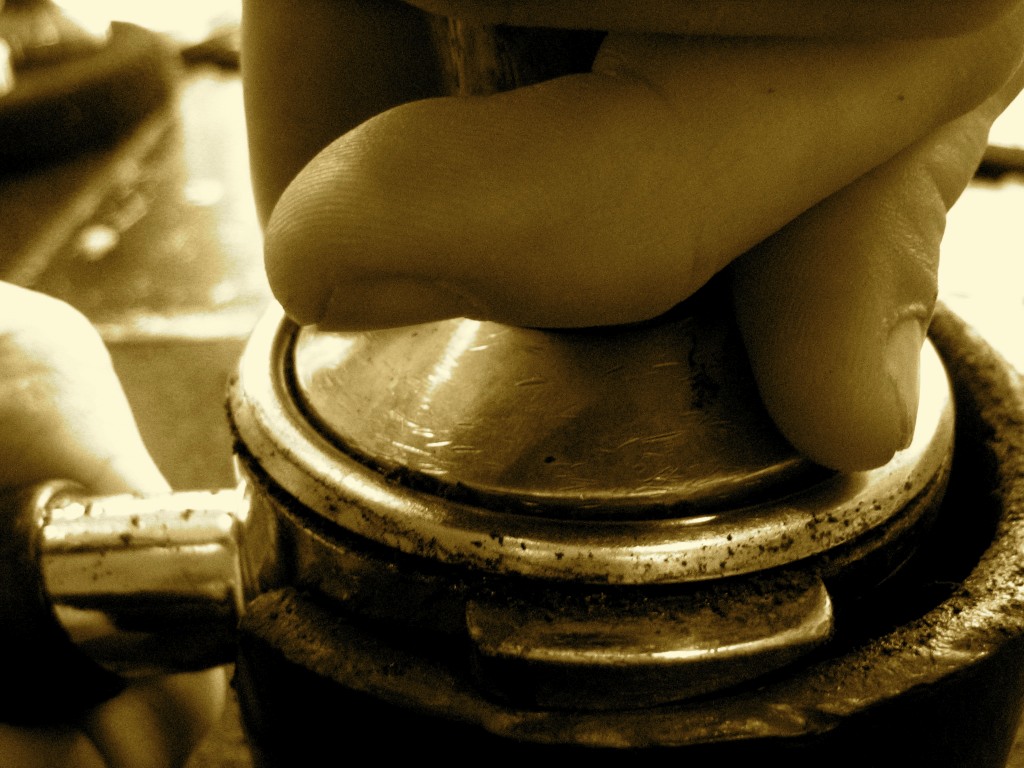
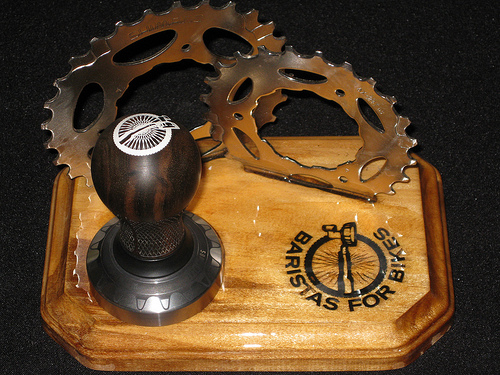

What Did You Learn in School Today?
Words and Music by Tom Paxton
What did you learn in school today,
Dear little boy of mine?
What did you learn in school today,
Dear little boy of mine?
I learned that Washington never told a lie.
I learned that soldiers seldom die.
I learned that everybody's free.
And that's what the teacher said to me.
That's what I learned in school today.
That's what I learned in school.
What did you learn in school today,
Dear little boy of mine?
What did you learn in school today,
Dear little boy of mine?
I learned that policemen are my friends.
I learned that justice never ends.
I learned that murderers die for their crimes.
Even if we make a mistake sometimes.
That's what I learned in school today.
That's what I learned in school.
What did you learn in school today,
Dear little boy of mine?
What did you learn in school today,
Dear little boy of mine?
I learned our government must be strong.
It's always right and never wrong.
Our leaders are the finest men.
And we elect them again and again.
That's what I learned in school today.
That's what I learned in school.
What did you learn in school today,
Dear little boy of mine?
What did you learn in school today,
Dear little boy of mine?
I learned that war is not so bad.
I learned of the great ones we have had.
We fought in Germany and in France.
And some day I might get my chance.
That's what I learned in school today.
That's what I learned in school.
It was a good living. But the New York freelance musician -- a bright thread in the fabric of the city -- is dying out. In an age of sampling, digitization and outsourcing, New York's soundtrack and advertising-jingle recording industry has essentially collapsed. Broadway jobs are in decline. Dance companies rely increasingly on recorded music. And many freelance orchestras, among the last steady deals, are cutting back on their seasons, sometimes to nothingness.It's not as if I didn't know the story well, but I do have to say that there was something about reading (and watching the videos) that took my breath away. I thought Daniel Wakin did the story justice.
I have felt for quite some time that the forces conspiring to diminish the field of concert music are forces that are much more complex, difficult to understand, and perhaps impossible to alter than most people might believe, particularly when folks like to place the blame on easy targets such as a lack of music and arts education in the schools.
I was glad that the article presented some salve, perhaps hope even, in the ways in which younger artists in particular are becoming more entrepreneurial, adapting to and trying to seize opportunities in the changing landscape.
I do have a reflection to add to the story, maybe you could argue that it's an extension really.
I tend to view this issue, the decline of the concert music life for professional musicians, through three different periods: the 1950's, the 1980's, and today. It is framed by something said to me by a teacher, mentor, and dear friend, Gilbert Cohen, who played second trombone for the New York Philharmonic. That's Gil, second from the left, in a picture of the New York Philharmonic low brass section, circa 1964.
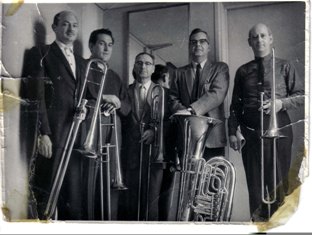 Near the time I was to graduate Juilliard, Gil Cohen, whom I had first met at a side-by-side concert with The New York Philharmonic and The NYC All-City High School Orchestra (we were both second trombones), later becoming close friends, said to me: "I worry about young guys like you coming up. I just don't see much of a career to be made."
Near the time I was to graduate Juilliard, Gil Cohen, whom I had first met at a side-by-side concert with The New York Philharmonic and The NYC All-City High School Orchestra (we were both second trombones), later becoming close friends, said to me: "I worry about young guys like you coming up. I just don't see much of a career to be made."Gil went on to talk about what it was like when he was freelancing in New York City during the 1950's, prior to joining The New York Philharmonic.
He then turned his mind towards today, keep in mind that the "today," that day or period, was approximately 1983. He said that the field was a fraction of what it had once been in comparison to the 1950's, and wondered how young players would make a living, in light of the number of graduates and the reduced field. Unless you got a major orchestra job, he said he worried, and everyone knows how hard it is to get such a job.
Fast forward to 2010, and the article in The New York Times. If you read the piece and don't know the story Gil Cohen told, you might get the impression that the decline has been something less than gradual, something that hasn't been ongoing for the past fifty years.
For these types of musicians, who play this music and these instruments, Gil Cohen paints story paints a much longer term picture. I would argue that what's happening today is an erosion that has reached the most top level freelancers, who may have been protected, to some degree, by the declines since the mid-20th century.
Don't get me wrong, I do recognize the the musical life in the United States is much more varied than it once was. There are more smaller productions, more new music, and artists are creating their own to replace such things as a record industry, artist management, etc. There is a wider array of styles and forms, and the field has expanded to include the teaching artist. But, if you're a classically trained trombonist, clarinet player, etc., well, the Times piece by Daniel Wakin is certainly something you understand all too well.
Can the changes be stopped, slowed down, or altered in any way? Has it hit bottom or leveled off? I tend to think not, for I believe the forces at play are not malleable. Sure, the musicians union can stave off having Broadway producers going to fully synthesized pit orchestras. But, can the union bring back the number of shows during the hey days of Broadway that used pits full of orchestra players. It's doubtful at best.
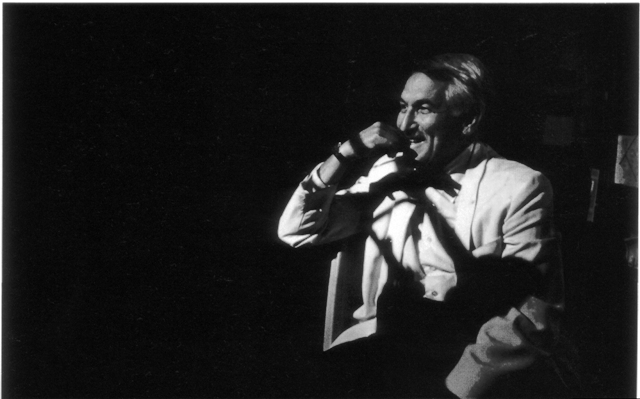
What I came to understand, which was not taught to me at Juilliard, was that the 20th century, heading into the 21st, was the century of great innovation and world making in music, and so very much of it was American. From Ives to Gershwin, to Miles Davis. From Harry Partch to Lou Harrison, to Steve Reich, to Meredith Monk. And that was just concert music. There is folk, country, rock, pop, music theater. Sondheim, Captain Beefheart, Woody Guthrie, Frank Loesser, Ernest Tubbs, Tom Waits, Louis Armstrong, The Carter Family, Laura Nyro, Buddy Holly, and I can go on and on.
It was a century where music and meaning was invented and reinvented over and over again, often seemingly out of whole cloth. It was a century of innovation and powerful expression.
And, of course, it's not limited to music. Whether it be Jackson Pollak, Cindy Sherman, Thornton Wilder, The Coen Brothers, Agnes DeMille, Paddy Chayefsky, W. C. Fields, George Carlin, well, it covers virtually every form of art you can imagine, from high to low, from comedy to tragedy, from commercial to financially bankrupt. It's the stuff everyone knows, and the stuff known by just a few. It's both the blockbuster and the diamonds scattered across the cultural and historical landscape.
I marvel at what America brought to the world. Made in America, by American artists. In so very many ways, it defines the century, as much or more in some cases than The Wright Brothers, the landing on the moon, the victory of World War II, the heyday of the motor city, and countless other archetypes of a great American century.
It's a shame that this simple and glorious fact is not better understood, for if you take the time to think about it, to really embrace the great depth and breadth, the role it plays in our lives and society, well, you may come to the conclusion that it is our cultural heritage, and for every American a birthright.
On the anniversary of the death of John Lennon, and yes, I get the slight irony that he was British, I think about not only the great art, in and of itself, but the power of art and the artist. I think of the meaning that the art gives us, both literal and otherwise. I think of the platform that great and popular artists are accorded to speak out on behalf of truth and humanity.
I think of these haunting and vitally important words published this week in The New York TImes, by Yoko Ono:
The most important gift we received from him was not words, but deeds. He believed in Truth, and had dared to speak up. We all knew that he upset certain powerful people with it. But that was John. He couldn't have been any other way. If he were here now, I think he would still be shouting the truth. Without the truth, there would be no way to achieve world peace.
I spend a lot of time in my professional life trying to build a better mousetrap that connects arts to education, and I struggle with the ever changing message and lack of transcendent rationale.
There is one thing for sure, that while I remain ambivalent about much of the rationale that connects arts to higher test scores, and a culture of compliance and accountability, in my heart I believe that it is the 20th and 21st centuries of American arts that is the cultural heritage of each and every student, something that is their birthright. I believe that access to this cultural heritage, in a manner that provides engagement and ultimately ownership is fundamental to what education is ultimately about.
And if not through the public schools, how indeed will our students access and engage with their heritage?
So, why the arts? For this moment, in memory of John Lennon, I will say that it is because it helps to expand the hearts and minds of our citizens, providing a context and meaning for their lives and world, helping to create a pathway for them to be happy, productive, and ready to participate in a democracy.
But hey, how many documentary films gets a $2 million foundation grant for its promotion? (The answer is that most don't have a $2 million budget for anything!)>
Well, today I present to you, unlike Waiting for Superman, a documentary about education where nothing has been staged!
Race to Nowhere.
Of course, this is the perfect juxtaposition with my previous blog about the the world beating scores registered by Shanghai students on PISA (Program for International Student Assessment).
So, what's emerging here? Those who are very high on high-stakes accountability, will surely deride this film as being against rigor, another swipe at failed progressive notions in education.
Yet, parents, social workers, psychologists, and many others are distressed by an education driven by high stakes, one that leaves little time for the whole child.
Perhaps we should call high stakes accountability a partial child approach.
While I would like to say, of course, the fact is it's not a matter of course that everyone would see that there must be a balance. A balanced curriculum, a balanced approach to the stake at hand, a balance that takes into account the needs of the whole child.
I am glad to see this film come forth and hope that it helps to leaven the dialogue and policies of "school reform" today.
"Wow, I'm kind of stunned, I'm thinking Sputnik," said Chester E. Finn Jr., who served in President Ronald Reagan's Department of Education, referring to the groundbreaking Soviet satellite launching. Mr. Finn, who has visited schools all across China, said, "I've seen how relentless the Chinese are at accomplishing goals, and if they can do this in Shanghai in 2009, they can do it in 10 cities in 2019, and in 50 cities by 2029."
Here's the excerpt that got my attention:
Chinese students spend less time than American students on athletics, music and other activities not geared toward success on exams in core subjects. Also, in recent years, teaching has rapidly climbed up the ladder of preferred occupations in China, and salaries have risen. In Shanghai, the authorities have undertaken important curricular reforms, and educators have been given more freedom to experiment.Perhaps I've got your attention now. For those who believe the arts are a core subject, well, apparently Mr. Dillon is not one of them. Perhaps Mr. Dillon hasn't heard that the arts are part of the core. Perhaps Mr. Dillon is being a realist and calling it as it is in many districts.
Well, if you think that giant grants from the Feds for STEM education, and an educational industrial complex built on reading and math wasn't enough, it's hard not to read this as something that augurs an even greater focus on core subjects, meaning ELA, math, and you can now add science to that list.
Let's not forget sport either. Is there a difference between sports and physical education. I guarantee you that physical education instructors will tell you yes, loudly. Nevertheless, if the prospect of a Race to Shanghai means less physical education, considering that in many urban school districts you can't provide much less, well, someone is going to have to find another way to deal with the over 40% of children in school districts such as New York City who are either overweight or obese.
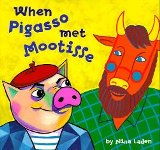
When Pigasso Met Mootisse
The book cover tells you all you want to know. A lovely and fun book. I stand self-corrected: A great children's book.My sister Linda and her son Ian, gave this book to my daughter Sophie. Linda is a veteran arts teacher in a Brooklyn public school.

What Charile Heard: The Story of American Composer Charles Ives
An inspired book, one that was given to me as a gift by The American Composers Orchestra (on whose board I sit) upon the birth of my daughter. It's a detailed and touching story of the extraordinary life of the the father of experimental music in America.
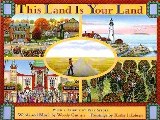
This Land is Your Land
Another absolutely stunning book, that is equal parts title song and bits and pieces of the life and legacy of Woody Guthrie. And of course, the book retains the original lyrics. Nothing censored. So, if you're one of those folks with an axe to grind about arts and social justice, this book is not for you.
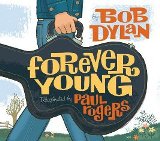
Forever Young
Hey Bob Dylan fans!

Man Gave Names to All The Animals
Hey again, Bob Dylan fans!
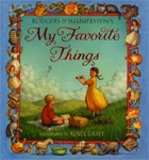
My Favorite Things
Take R&H classics and combine them with sweet illustrations by Renee Graef. Sounds like a nice arts integration project.
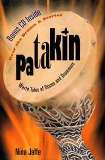
Patakin--World Tales of Drums and Drummers
My dear friend Nina Jaffe has written this wonderful book that should be on the shelves of every art loving parent and child, everywhere! Once upon a time, I thought this book could be the basis for a children's drumming movement. I still do. Ask Nina, she will tell you about my vision of drum sets and refrigerator magnets for kids. And, don't forget to check out Nina's series of children's books based upon Wonder Woman!
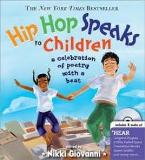
Hip Hop Speaks to Children with CD: A Celebration of Poetry with a Beat
A great entry point for contemporary poetry for kids. Beautifully illustrated with a beat you can dance to, as they used to say on American Bandstand.
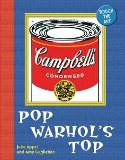
Touch the Art: Pop Warhol's Top
I just love this book, one that is particularly good with the youngest of the younger generation. And, it's not just Warhol, not that there's anything wrong with that.
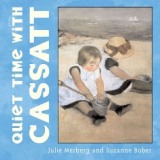
Quiet Time with Cassatt
This book is beautifully put together. A very sweet and thoughtful approach. And, the reproductions are surprisingly good.
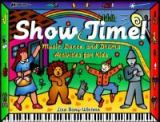
Show Time: Music, Dance, and Drama Activities for Kids
Why wait?

The Butterfly Dance
This books is a captivating story of a Rabbit that travels to perform the traditional Butterfly Dance. A beautiful entry into the Hopi Culture.
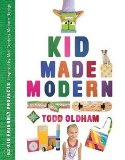
Kid Made Modern
Crafts and Modern Art, presented to you by Todd Oldham. Brilliant.
And here are a few additional links to books by Nina Jaffe:
In the Month of Kislev: A Story for Hanukkah (Viking) ages-3-8 (and up)
The Golden Flower: A Taino Myth from Puerto Rico (Arte Publico) ages 3-8 (and up) --
La Flor de Oro: Un Mito Taino de Puerto Rico (Arte Publico) ages 3-8 (and up)
The Way Meat Loves Salt: A Cinderella Tale from the Jewish Tradition ( Holt) ages 5-10 (and up)
Patakín: World Tales of Drums and Drummers (Cricket; Holt) ages 8 -14 (and up)
The Cow of No Color: Riddle Stories and Justice Tales from Around the World (Holt) ages 8-14 (and up)
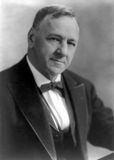

Our Stories Do Matter - by Linda Starkweather
Former teacher of theatre at Eastridge High School in Irondequoit, NY
In June of 2009 the New York Teacher published my Point of View essay The Challenge of Teaching Art in the Public School System. One year later, after 14 years of teaching, I was laid off. Actually they offered me part of a job, a point six to be exact, which in real life, being a teacher of theatre which includes afternoon rehearsals and having an hour commute one way to school, was really a full time job for part time pay. I said "no, thank you." The unraveling of my relatively short teaching career began just before I wrote that article in 2009, which was in response to the following experience.
I was invited to serve on a year long committee to evaluate and improve our district wide arts program. How exciting to be asked to help shape the future of the arts in our schools! I would finally get the opportunity to examine inequities like the $400 stipend for producing the fall play vs. the $4,000 stipend for coaching a varsity sport, or the minuscule budget, allocated district wide, for visual arts materials. In order for our committee to improve the arts program, It seemed logical to identify what wasn't working - to share, for example the frustration of being a performing arts teacher under five different principles with five different agendas, in the same number of years. The point, I thought, was to allow all of the district's teaching artists to tell their stories, good and bad, in order to better serve the arts in our district.
Well, my bubble was burst pretty quickly when I was hauled into the administrator's office the Monday following an all day committee session only to be chastised for telling my personal story as a struggling arts teacher.
Two years later, I am still haunted by three pronouncements uttered by that administrator during that humiliating inquisition. First she said: "Our personal stories don't matter."
Through my tears, I responded to this first decree in the most enlightened way I could muster at the time. "Oh, but our stories do matter. All we have are our stories. Art is uniquely about our stories: Visual art is the personal depiction of how we see the world, dance is a pure expression of our personal or collective stories, music is the heightened expression of what it means to be human, and the theatre - in it's very essence - is about our stories and the naked courage it takes to tell them." I then asked her "if I am not allowed to tell my story, how am I supposed to motivate my students to tell theirs?
How do I encourage the personal truth-telling that is at the heart of all art forms and the beginning of healing for our world? "
She responded:"Well, we are not responsible for each other."
Oh! But we are responsible for each other, I softly remarked. We are always talking about our 'school family' and the need to catch kids before they fall through the cracks. We have a dysfunctional world, in part, because we think we are not responsible for each other. I was still crying at this point, and I felt it was important to explain that my tears were not a sign of weakness, but an honest reaction to the disrespect I felt was being awarded to something I was passionate about and something I know is worth fighting for. I think my vulnerability threw her a bit because at that point all she could manage to say was: "Well, you chose this profession."
There was no need to respond to that statement. The message was loud and clear. The Arts, and artists in particular are not respected nor valued in a system that measures success only by numbers.
The remainder of the year included admonishments for posters I put up that read "How about No Child Left Unkind", and another that read "Shakespeare - providing continuous employment for over 400 years!" I was also that I had better get my class numbers up - even though it meant recruiting students away from other teachers which may have put them at risk of loosing their job due to under enrollment.
I had a proposal for an original, well planned, production of Shakespeare rejected in lieu of yet another mounting of the popular high school musical Annie. I began day one of my second semester facing eight, volatile, at-risk, freshman boys who were surreptitiously enrolled in my third year Acting Shakespeare class without any warning. I came to love them, but it pretty much sabotaged the class for the other eight students who really were serious about tackling the Bard. Whether consciously orchestrated or not, my superiors were clearly showing me the door. I'm sure my bumper sticker didn't help my cause either. It reads, "Artists are here to disturb the peace."
So, why tell my story today? Selfishly, I'm hoping that, just like in the theatre, sharing my tale will be cathartic - for myself and perhaps others who have had similar experiences. I am so weary of replaying that unsettling day in my administrator's office over and over in my head. It's time for me to let go and to move on. But, this is also a cautionary tale for those passionate, idealistic spirits that want to change the world through teaching. It is a reminder that sometimes the only thing more difficult than speaking the truth is hearing the truth spoken. And we have no control over the reaction of those who don't necessarily want to hear from us.
I miss my kids and I miss my dedicated colleagues, but leaving the system has freed me to teach in the way I am convinced is of value - from a passionate, truthful, uncompromising platform that supports the belief that . . . "Our deepest calling is to grow into our own authentic self-hood, whether or not it conforms to some image of who we ought to be. As we do so, we will not only find the joy that every human being seeks--we will also find our path of authentic service in the world." - Parker J. Palmer